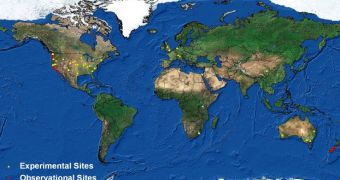Over the past few decades, as the world became more connected, investigators noticed a rise in the incidence of cases of invasive plant species taking up residence in new habitats, and starting to exert a complete dominance over these ecosystems.
But there is an intrinsic contradiction in all of this. Native species have the advantage of occupying that particular territory for millions of years, and are therefore exquisitely adapted to its characteristics.
If that is the case, how is it then that newly-introduced species can take everything over in just a few years? Native biodiversity is almost always lost, as are various functions that the ecosystem used to fulfill before the invaders came along.
Nutrient cycling is a good example of an ecosystemic function that is usually disrupted by invasive species. In turn, this phenomenon has repercussions on the entire food webs established in that particular habitat.
What is beginning to become very clear is that advancing species tend to have a set of traits that allow them to survive better even in new homes. Despite extensive studies in this field, experts have failed to identify what those traits may be.
One of the ideas most commonly used to explain this is called the abundance assumption. It literally assumes that one of the reasons invasive plant species are so successful at what they do is that they tend to behave in special ways.
This line of thought has been paraded around for years, but little studies have been conducted to test it practically. This is precisely what the global collaboration called the Nutrient Network did recently.
The new investigation was carried out at 39 locations on 4 continents, and involved a number of 26 plant species. The abundance assumption revealed some glaring lapses during the study.
“Predicting success of invading species is difficult and uncertain, but very important. The Nutrient Network has enabled a field test of one of the most basic assumptions of current models, and found it lacking,” explains Henry Gholz.
“But, the results could lead to better predictions in the future,” adds the official, who is a program director in the National Science Foundation's (NSF) Division of Environmental Biology, which funds the Nutrient Network.
“The results suggest that invasive plants have a similar or lower abundance at both introduced and native ranges, and that increases in species abundance are unusual,” adds Jennifer Firn.
“Instead, abundance at native sites can predict abundance at introduced sites, a criterion not currently included in biosecurity screening programs,” says the Queensland University of Technology / CSIRO scientist.
Firn is also the lead author of a new paper detailing the findings, which appears in the latest issue of the esteemed scientific journal Ecology Letters. The work was coauthored by 36 researchers.

 14 DAY TRIAL //
14 DAY TRIAL //